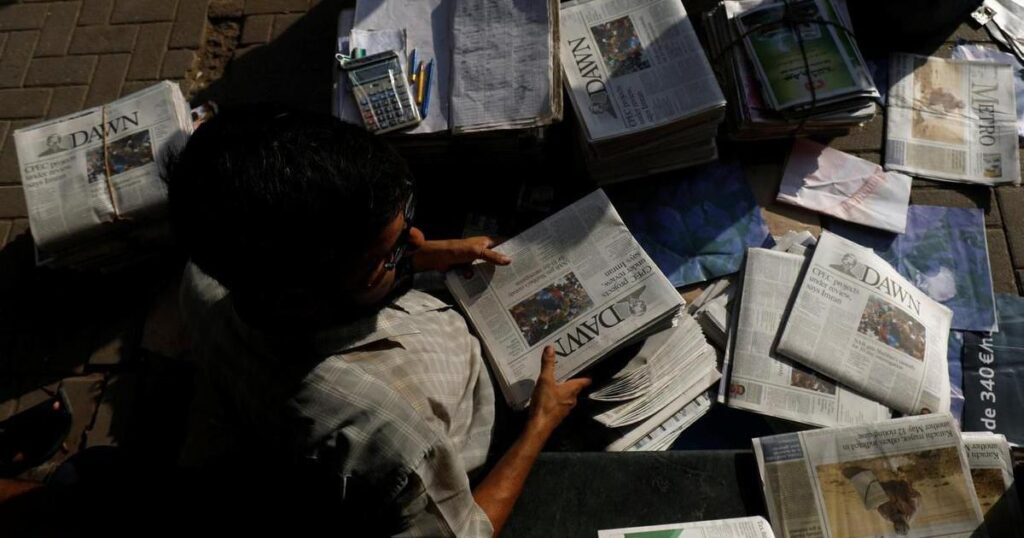A City in Shock
On a routine day in Washington, D.C., a place known for its rich history and iconic museums, chaos broke the calm. A shooting incident at a prominent museum has sparked public fear, security overhauls, and a national conversation. The man now at the center of this incident is Elias Rodriguez.
The name Elias Rodriguez has become synonymous with one of the most disturbing security breaches in recent D.C. history. As authorities work through the case, the public seeks to understand: Who is Elias Rodriguez? What motivated this act? And how will it affect museum security moving forward?
This blog offers a factual, in-depth look at the shooting, suspect background, legal proceedings, and wider implications. Whether you’re a concerned citizen, policymaker, or security professional, this case highlights urgent issues worth exploring.
Who is Elias Rodriguez?
Early Life and Background
Elias Rodriguez, 32, is a resident of Silver Spring, Maryland, with no prior high-profile criminal record. Neighbors and acquaintances described him as quiet and private. However, investigators are now piecing together a life that may have included underlying mental health challenges and growing social isolation.
Occupation and Personal Life
Rodriguez reportedly held several short-term jobs in retail and security. At the time of the incident, he was unemployed. Friends noted a recent shift in his behavior—withdrawal from social activities and increased agitation when discussing political or societal issues.
The DC Museum Shooting: What Happened?
Timeline of Events
- Date: May 10, 2025
- Time: Approximately 2:35 PM EST
- Location: The Smithsonian National Museum of American History
Visitors inside the museum heard gunshots echo through the exhibition halls. Panic ensued as security evacuated the building. Law enforcement arrived within minutes and apprehended the suspect without further injuries to the public.
Victims and Injuries
Three individuals were injured:
- A museum security officer (shot in the leg)
- A tourist from Texas (grazed arm)
- A local college student (minor injuries from fleeing)
All victims have since been released from medical care. The swift response of museum personnel and first responders is credited with preventing a greater tragedy.
How Elias Rodriguez Was Caught
The Arrest
Authorities arrested Elias Rodriguez at the scene. Witnesses claim he surrendered quickly, dropping the weapon and lying on the ground before being subdued. Surveillance footage showed him entering the museum an hour before the attack, acting calmly and without drawing attention.
Weapon Used
Rodriguez used a legally purchased 9mm handgun. Investigators are now probing how he acquired the firearm and whether red flags were missed during the background check.
Motive Behind the Shooting
Statements Made
During preliminary questioning, Rodriguez allegedly expressed grievances about governmental policies and a desire to “make a statement.” While authorities have not yet classified this as an act of domestic terrorism, motivations rooted in ideology or mental illness remain under review.
Psychological Evaluation
Rodriguez is undergoing psychiatric assessment to determine mental fitness for trial. Legal analysts suggest that his defense may lean on an insanity plea, citing emotional instability and delusional thinking.
Legal Proceedings and Current Status
Charges Filed
As of May 15, 2025, Elias Rodriguez faces multiple federal and state charges:
- Three counts of attempted murder
- Assault with a deadly weapon
- Unlawful possession of a firearm on federal property
- Terroristic threats
Upcoming Court Dates
Rodriguez is currently held without bail. The preliminary hearing is set for June 3, 2025, at the D.C. Superior Court. Legal teams are preparing for what could be a lengthy and high-profile trial.
Museum Security: A Wake-Up Call
Security Measures in Place
Most museums in D.C., especially those under the Smithsonian Institution, already have:
- Armed security guards
- Bag checks
- Metal detectors
Despite these, Rodriguez managed to bring a firearm inside. This has led to major questions about gaps in security protocol.
Reactions from Officials
Smithsonian representatives released a statement promising to “review and reinforce all security measures.” D.C. Mayor Muriel Bowser called for a federal task force to evaluate museum safety standards across the nation.
Public Response
There has been an outcry from both museum-goers and civil liberties advocates:
- Some demand increased surveillance and police presence.
- Others worry about privacy rights and over-policing in cultural spaces.
Case Comparisons: How Does It Stack Up?
Previous Incidents in Museums
- 2019 Holocaust Museum Attack: A gunman fatally shot a security guard. Resulted in metal detector installation.
- 2023 Chicago Art Institute Threat: A foiled attempt prompted lockdowns and security overhauls.
While not as deadly, the Elias Rodriguez case is unique due to its public setting and the ideological undertones that are still being investigated.
FBI and DHS Involvement
The Department of Homeland Security and the FBI are now involved, examining whether Rodriguez had ties to any extremist groups or online communities promoting violence.
Media Coverage and Public Perception

Mainstream Media
News outlets like CNN, NBC, and The Washington Post have been closely covering the story. Headlines have ranged from factual to sensational, with some criticism about potential bias in suspect portrayal.
Social Media Response
Platforms like Twitter and Reddit exploded with theories and debates. While some emphasized gun control, others focused on mental health, social isolation, and surveillance ethics.
Trending hashtags included:
- #EliasRodriguez
- #MuseumShooting
- #DCSafety
Community Healing and Recovery
Victim Support
The Smithsonian has offered:
- Free trauma counseling for staff and visitors
- Medical expense assistance
- Commemorative services honoring the quick response of first responders
Public Forums
Town halls and community forums have been scheduled to address public concerns and share updates. Officials have encouraged residents to stay informed through verified government sources.
What This Means for the Future
Policy Changes Under Review
The incident involving Elias Rodriguez has reignited debates around:
- Gun control
- Background check reforms
- Mental health evaluations
- Security standards in public cultural institutions
Technology Integration
There’s also a push toward AI-powered threat detection systems, such as facial recognition and behavioral analytics, to identify potential threats before they act.
Public Vigilance
Security experts urge the public to:
- Report suspicious activity
- Cooperate with bag checks and screenings
- Participate in community preparedness programs
Step-by-Step: What to Do If You’re in a Museum Emergency
- Stay Calm – Panic can lead to injury and confusion.
- Listen to Staff Instructions – They’re trained for these events.
- Avoid Crowded Exits – Look for emergency doors or alternate routes.
- Call 911 – Only if safe to do so.
- Help Others If You Can – Especially children and seniors.
- Stay Informed – Follow alerts from local authorities.
Lessons from the Elias Rodriguez Case
The incident involving Elias Rodriguez is a stark reminder that even places of learning and culture are not immune to modern security threats. As investigations continue, the emphasis must be on prevention—through stronger policies, better mental health support, and advanced safety technologies.
Key Takeaways
- Elias Rodriguez is accused of a shooting at the National Museum of American History.
- He was apprehended on-site without incident and faces multiple serious charges.
- Motivations may include ideological grievances or mental illness.
- The incident has sparked discussions on museum security, gun control, and public safety.
- Community healing and policy reforms are already underway.














